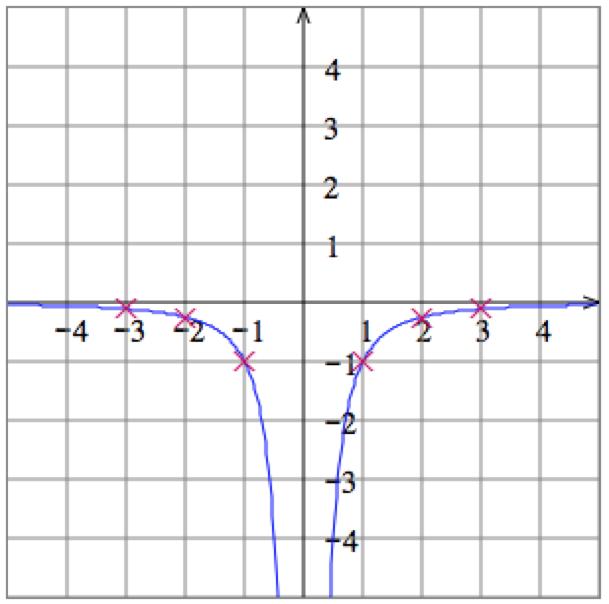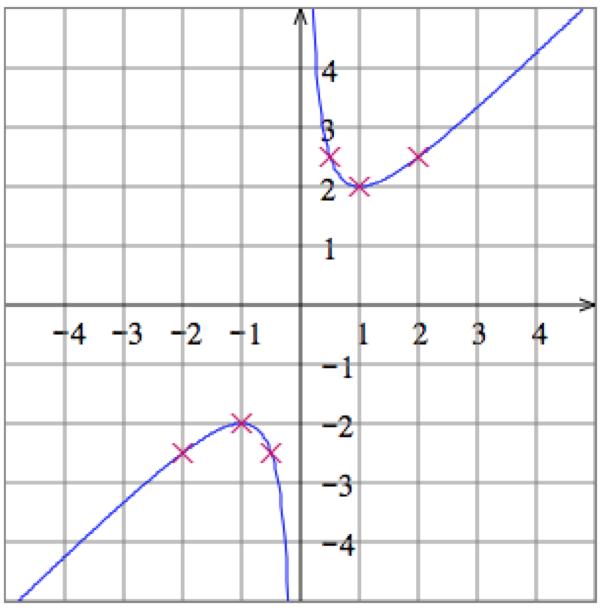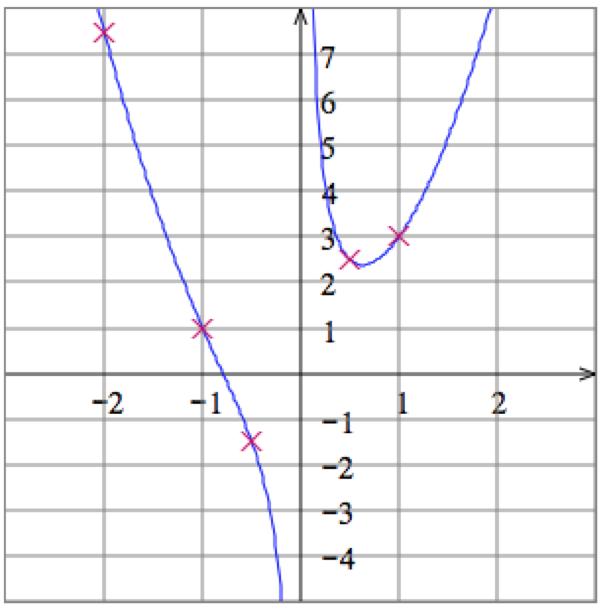
Section 0.1
1. 2(4 + ( 1))(2 4) = 2(3)( 8) = (6)( 8) = 48 2. 3 + ([4 2] 9) = 3 + (2 × 9) = 3 + 18 = 21
3. 20∕(3 * 4) 1 = 20 12 1 = 5 3 1 = 2 3 4. 2 (3 * 4)∕10 = 2 12 10 = 2 6 5 = 4 5
5. 3 + ([3 + ( 5)]) 3 2 × 2 = 3 + ( 2) 3 4 = 1 1 = 1 6. 12 (1 4) 2(5 1) 2 1 = 12 ( 3) 16 1 = 15 15 = 1
7. (2 5 * ( 1))∕1 2 * ( 1) = 2 5 ( 1) 1 2 ⋅ ( 1) = 2 + 5 1 + 2 = 7 + 2 = 9 8. 2 5 * ( 1)∕(1 2 * ( 1)) = 2 5 ( 1) 1 2 ( 1) = 2 5 1 + 2 + 2 = 2 + 5 3 = 11 5
9. 2 ( 1) 2∕2 = 2 × ( 1) 2 2 = 2 × 1 2 = 2 2 = 1 10. 2 + 4 3 2 = 2 + 4 ×
11. 2 4 2 + 1 = 2 × 16 + 1 = 32 + 1 = 33
13. 3^2+2^2+1 = 3 2 + 2 2 + 1 = 9 + 4 + 1 = 14 14. 2^(2^2-2) = 2 (2 2 2) = 2 4 2 = 2 2 = 4
15. 3 2( 3) 2 6(4 1) 2 = 3 2 × 9 6(3) 2 = 3 18 6 × 9 = 15 54 = 5 18 16. 1 2(1 4) 2 2(5 1) 2 2 = 1 2( 3) 2 2(4) 2 2 = 1 2 × 9 2 × 16 × 2 = 1 18 64 = 17 64
17. 10*(1+1/10)^3 = 10(1 + 1 10 ) 3 = 10(1.1) 3 = 10 × 1 331 = 13 31
19. 3[ 2 3 2 (4 1) 2 ] = 3⎡ ⎣ ⎢ ⎢ 2 × 9 3 2 ⎤ ⎦ ⎥ ⎥ = 3[ 18 9 ] = 3 × 2 = 6
20. [ 8(1 4) 2 9(5 1) 2 ] = [ 8 × 9 9 × 16 ] = ( 72 144 ) = ( 1 2 ) = 1 2
21. 3⎡ ⎣ ⎢ ⎢1 ( 1 2 ) 2⎤ ⎦ ⎥ ⎥ 2 + 1 = 3[1 1 4 ] 2 + 1 = 3[ 3 4 ] 2 + 1 = 3[ 9 16 ] + 1 = 27 16 + 1 = 43 16 22. 3⎡ ⎣ ⎢ ⎢ 1 9 ( 2 3 ) 2⎤ ⎦ ⎥ ⎥ 2 + 1 = 3[ 1 9 4 9 ] 2 + 1 = 3[ 3 9 ] 2 + 1 = 3[ 1 3 ] 2 + 1 = 3 1 9 + 1 = 3 9 + 1 = 4 3
23. (1/2)^2-1/2^2 = # 1 2 $ 2 1 2 2 = 1 4 1 4 = 0 24. 2/(1^2)-(2/1)^2 = 2 1 2 # 2 1 $ 2 = 2 1 4 1 = 2
25. 3 × (2 5) = 3*(2-5) 26. 4 + 5 9 = 4+5/9 or 4+(5/9)
27. 3 2 5 = 3/(2-5) 28. 4 1 3 = (4-1)/3
29. 3 1 8 + 6 = (3-1)/(8+6)
Note 3-1/8-6 is wrong, as it corresponds to 3 1 8 6
30. 3 + 3 2 9 = 3+3/(2-9)
31. 3 4 + 7 8 = 3-(4+7)/8 32. 4 × 2 ! 2 3 " = 4*2/(2/3) or (4*2)/(2/3)
33. 2 3 + 𝑥 𝑥𝑦 2 = 2/(3+x)-x*y^2 34. 3 + 3 + 𝑥 𝑥𝑦 = 3+(3+x)/(x*y)
35. 3.1𝑥 3 4𝑥 2 60 𝑥 2 1 = 3.1x^3-4x^(-2)-60/(x^2-1)
36. 2 1𝑥 3 𝑥 1 + 𝑥 2 3 2 = 2.1x^(-3)-x^(-1)+(x^2-3)/2
Solutions Section 0.1
37. ! 2 3 " 5 = (2/3)/5 38. 2 ! 3 5 " = 2/(3/5)
39. 3 4 5 × 6 = 3^(4-5)*6
Note that the entire exponent is in parentheses.
41. 3(1 + 4 100 ) 3 = 3*(1+4/100)^(-3)
43. 3 2𝑥 1 + 4 𝑥 1 = 3^(2*x-1)+4^x-1
45. 2 2𝑥 2 𝑥+1 = 2^(2x^2-x+1)
Note that the entire exponent is in parentheses.
47. 4𝑒 2𝑥 2 3
= 4*e^(-2*x)/(2-3e^(-2*x)) or 4(*e^(-2*x))/(2-3e^(-2*x)) or (4*e^(-2*x))/(2-3e^(-2*x))
40. 2 3+5 7 9 = 2/(3+5^(7-9))
Note that the entire exponent is in parentheses.
Note that the entire exponent is in parentheses.
= (e^(2*x)+e^(-2*x))/(e^(2*x)e^(-2*x))
49. 3(1 ! 1 2 " 2) 2 + 1 = 3(1-(-1/2)^2)^2+1 50. 3⎛ ⎝ ⎜ ⎜ 1 9 ( 2 3 ) 2⎞ ⎠ ⎟ ⎟ 2 + 1 = 3(1/9-(2/3)^2)^2+1
Section 0.2
Section 0.3
𝑥 = (1 + 2𝑥), then = 1 ⇒ 𝑥 = 1 3 . So, 𝑥 = 1 or 1 3 .
22. (𝑥 3 2𝑥 2 + 4)(3𝑥 2 𝑥 + 2) = 𝑥 3(3𝑥 2 𝑥 + 2) 2𝑥 2(3𝑥 2 𝑥 + 2) + 4(3𝑥 2 𝑥 + 2)
23. (𝑥 + 1)(𝑥 + 2) + (𝑥 + 1)(𝑥 + 3)
= (𝑥 + 1)(𝑥 + 2 + 𝑥 + 3)
= (𝑥 + 1)(2𝑥 + 5)
25. (𝑥 2 + 1) 5(𝑥 + 3) 4 + (𝑥 2 + 1) 6(𝑥 + 3) 3 = (𝑥 2 + 1) 5(𝑥 + 3) 3(𝑥 + 3 + 𝑥 2 + 1)
= (𝑥 2 + 1) 5(𝑥 + 3) 3(𝑥 2 + 𝑥 + 4)
24. (𝑥 + 1)(𝑥 + 2) 2 + (𝑥 + 1) 2(𝑥 + 2)
= (𝑥 + 1)(𝑥 + 2)(𝑥 + 2 + 𝑥 + 1)
= (𝑥 + 1)(𝑥 + 2)(2𝑥 + 3)
26. 10𝑥(𝑥 2 + 1) 4(𝑥 3 + 1) 5 + 15𝑥 2(𝑥 2 + 1) 5(𝑥 3 + 1) 4 = 5𝑥(𝑥 2 + 1) 4(𝑥 3 + 1) 4[2(𝑥 3 + 1) + 3𝑥(𝑥 2 + 1)] = 5𝑥(𝑥 2 + 1) 4(𝑥 3 + 1) 4(5𝑥 3 + 3𝑥 + 2)
27. (𝑥 3 + 1) 𝑥 + 1 √ (𝑥 3 + 1) 2 𝑥 + 1 √ = (𝑥 3 + 1) 𝑥 + 1 √ ⋅ [1 (𝑥 3 + 1)] = 𝑥 3(𝑥 3 + 1) 𝑥 + 1 √ 28. (𝑥 2 + 1) 𝑥 + 1 √ (𝑥 + 1) 3 √ = 𝑥 + 1 √ [𝑥 2 + 1 (𝑥 + 1) 2 √ ] = 𝑥 + 1 √ [𝑥 2 + 1 (𝑥 + 1)] = (𝑥 2 𝑥) 𝑥 + 1 √ = 𝑥(𝑥 1) 𝑥 + 1 √
29. (𝑥 + 1) 3 √ + (𝑥 + 1) 5 √ = (𝑥 + 1) 3 √ ⋅ [1 + (𝑥 + 1) 2 √ ] = (𝑥 + 1) 3 √ (1 + 𝑥 + 1) = (𝑥 + 2) (𝑥 + 1) 3 √ 30. (𝑥 2 + 1) (𝑥 + 1) 4 3 √ (𝑥 + 1) 7 3 √ = (𝑥 + 1) 4 3 √ [𝑥 2 + 1 (𝑥 + 1) 3 3 √ ] = (𝑥 + 1) 4 3 √ ⋅ [𝑥 2 + 1 (𝑥 + 1)] = (𝑥 2 𝑥) (𝑥 + 1) 4 3 √ = 𝑥(𝑥 1) (𝑥 + 1) 4 3 √
31. 𝑎 = 2, 𝑏 = 6, 𝑐 = 5, so that the discriminant is 𝑏 2 4𝑎𝑐 = 6 2 4(2)(5) = 36 40 = 4
As the discriminant is negative, the expression does not factor at all.
32. 𝑎 = 4, 𝑏 = 6, 𝑐 = 2, so that the discriminant is 𝑏 2 4𝑎𝑐 = ( 6) 2 4(4)(2) = 36 32 = 4 = 2 2
As the discriminant is a perfect square, the expression factors over the integers.
33. 𝑎 = 3, 𝑏 = 2, 𝑐 = 3, so that the discriminant is 𝑏 2 4𝑎𝑐 = ( 2) 2 4( 3)(3) = 4 + 36 = 40
As the discriminant is positive but not a perfect square, the expression factors, but not over the integers.
34. 𝑎 = 1, 𝑏 = 4, 𝑐 = 7, so that the discriminant is 𝑏 2 4𝑎𝑐 = ( 4) 2 4(1)( 7) = 16 + 28 = 44
As the discriminant is positive but not a perfect square, the expression factors, but not over the integers.
35. 𝑎 = 8, 𝑏 = 12, 𝑐 = 4, so that the discriminant is 𝑏 2 4𝑎𝑐 = 12 2 4(8)(4) = 144 128 = 16 = 4 2
As the discriminant is a perfect square, the expression factors over the integers.
Solutions Section 0.4
36. 𝑎 = 1, 𝑏 = 2, 𝑐 = 19, so that the discriminant is 𝑏 2 4𝑎𝑐 = 2 2 4(1)(19) = 4 76 = 72
As the discriminant is negative, the expression does not factor at all.
37. 𝑎 = 40, 𝑏 = 64, 𝑐 = 24, so that the discriminant is 𝑏 2 4𝑎𝑐 = ( 64) 2 4(40)(24) = 4,096 3,840 = 256 = 16 2
As the discriminant is a perfect square, the expression factors over the integers.
38. 𝑎 = 10, 𝑏 = 32, 𝑐 = 32, so that the discriminant is 𝑏 2 4𝑎𝑐 = ( 32) 2 4( 10)( 32) = 1,024 1,280 = 256
As the discriminant is negative, the expression does not factor at all.
39. 𝑎 = 6, 𝑏 = 22, 𝑐 = 16, so that the discriminant is 𝑏 2 4𝑎𝑐 = ( 22) 2 4(6)(16) = 484 384 = 100 = 10 2
As the discriminant is a perfect square, the expression factors over the integers.
40. 𝑎 = 48, 𝑏 = 32, 𝑐 = 4, so that the discriminant is 𝑏 2 4𝑎𝑐 = 32 2 4(48)(4) = 1,024 768 = 256 = 16 2
As the discriminant is a perfect square, the expression factors over the integers.
41. a. 2𝑥 + 3𝑥 2 = 𝑥(2 + 3𝑥)
b. 𝑥(2 + 3𝑥) = 0
𝑥 = 0 or 2 + 3𝑥 = 0
𝑥 = 0 or 2∕3
43. a. 6𝑥 3 2𝑥 2 = 2𝑥 2(3𝑥 1)
b. 2𝑥 2(3𝑥 1) = 0
𝑥 2 = 0 or 3𝑥 1 = 0
𝑥 = 0 or 1∕3
45. a. 𝑥 2 8𝑥 + 7 = (𝑥 1)(𝑥 7)
b. (𝑥 1)(𝑥 7) = 0
𝑥 1 = 0 or 𝑥 7 = 0
𝑥 = 1 or 7
47. a. 𝑥 2 + 𝑥 12 = (𝑥 3)(𝑥 + 4)
b. (𝑥 3)(𝑥 + 4) = 0
𝑥 3 = 0 or 𝑥 + 4 = 0
𝑥 = 3 or 4
49. a. 2𝑥 2 3𝑥 2 = (2𝑥 + 1)(𝑥 2)
b. (2𝑥 + 1)(𝑥 2) = 0
2𝑥 + 1 = 0 or 𝑥 2 = 0
𝑥 = 1∕2 or 2
42. a. 𝑦 2 4𝑦 = 𝑦(𝑦 4) b. 𝑦(𝑦 4) = 0 𝑦 = 0 or 𝑦 4 = 0 𝑦 = 0 or 4
44. a. 3𝑦 3 9𝑦 2 = 3𝑦 2(𝑦 3) b. 3𝑦 2(𝑦 3) = 0
𝑦 2 = 0 or 𝑦 3 = 0 𝑦 = 0 or 3
46. a. 𝑦 2 + 6𝑦 + 8 = (𝑦 + 2)(𝑦 + 4) b. (𝑦 + 2)(𝑦 + 4) = 0
𝑦 + 2 = 0 or 𝑦 + 4 = 0
𝑦 = 2 or 4
48. a. 𝑦 2 + 𝑦 6 = (𝑦 2)(𝑦 + 3)
b. (𝑦 2)(𝑦 + 3) = 0
𝑦 2 = 0 or 𝑦 + 3 = 0
𝑦 = 2 or 3
50. a. 3𝑦 2 8𝑦 3 = (3𝑦 + 1)(𝑦 3)
b. (3𝑦 + 1)(𝑦 3) = 0
3𝑦 + 1 = 0 or 𝑦 3 = 0
𝑦 = 1∕3 or 3
Solutions Section 0.4
51. a. 6𝑥 2 + 13𝑥 + 6 = (2𝑥 + 3)(3𝑥 + 2)
b. (2𝑥 + 3)(3𝑥 + 2) = 0
2𝑥 + 3 = 0 or 3𝑥 + 2 = 0
𝑥 = 3∕2 or 2∕3
53. a. 12𝑥 2 + 𝑥 6 = (3𝑥 2)(4𝑥 + 3)
b. (3𝑥 2)(4𝑥 + 3) = 0
3𝑥 2 = 0 or 4𝑥 + 3 = 0
𝑥 = 2∕3 or 3∕4
55. a. 𝑥 2 + 4𝑥𝑦 + 4𝑦 2 = (𝑥 + 2𝑦) 2
52. a. 6𝑦 2 + 17𝑦 + 12 = (3𝑦 + 4)(2𝑦 + 3)
b. (3𝑦 + 4)(2𝑦 + 3) = 0 3𝑦 + 4 = 0 or 2𝑦 + 3 = 0 𝑦 = 4∕3 or 3∕2
54. a. 20𝑦 2 + 7𝑦 3 = (4𝑦 1)(5𝑦 + 3)
b. (4𝑦 1)(5𝑦 + 3) = 0 4𝑦 1 = 0 or 5𝑦 + 3 = 0 𝑦 = 1∕4 or 3∕5
b. (𝑥 + 2𝑦) 2 = 0 𝑥 + 2𝑦 = 0 𝑥 = 2𝑦 56. a. 4𝑦 2 4𝑥𝑦 + 𝑥 2 = (2𝑦 𝑥) 2 b. (2𝑦 𝑥) 2 = 0 2𝑦 𝑥 = 0 𝑦 = 𝑥∕2
57. a. 𝑥 4 5𝑥 2 + 4 = (𝑥 2 1)(𝑥 2 4) = (𝑥 + 1)(𝑥 1)(𝑥 + 2)(𝑥 2)
b. (𝑥 + 1)(𝑥 1)(𝑥 + 2)(𝑥 2) = 0
𝑥 + 1 = 0 or 𝑥 1 = 0 or 𝑥 + 2 = 0 or 𝑥 2 = 0 𝑥 = ±1 or ±2
59. a. 𝑥 2 3 = (𝑥 3√ )(𝑥 + 3√ )
b. (𝑥 3√ )(𝑥 + 3√ ) = 0
𝑥 3√ = 0 or 𝑥 + 3√ = 0
𝑥 = ± 3√
58. a. 𝑦 4 + 2𝑦 2 3 = (𝑦 2 1)(𝑦 2 + 3) = (𝑦 + 1)(𝑦 1)(𝑦 2 + 3) b. (𝑦 + 1)(𝑦 1)(𝑦 2 + 3) = 0
𝑦 + 1 = 0 or 𝑦 1 = 0 or 𝑦 2 + 3 = 0 𝑦 = ±1 (Notice that 𝑦 2 + 3 = 0 has no real solutions.)
60. a. 𝑦 2 7 = (𝑦 7√ )(𝑦 + 7√ )
b. (𝑦 7√ )(𝑦 + 7√ ) = 0
𝑦 7√ = 0 or 𝑦 + 7√ = 0
𝑦 = ± 7√
(
+ 2)
+ 1) 3(𝑥 + 2)
+
(
+ 1)] (
Section 0.7
∕2
6. (𝑥 + 1)(𝑥 + 2) 2 + (𝑥 + 1) 2(𝑥 + 2) = 0, (𝑥 + 1)(𝑥 + 2)(𝑥 + 2 + 𝑥 + 1) = 0, (𝑥 + 1)(𝑥 + 2)(2𝑥 + 3) = 0, 𝑥 = 1, 2, 3∕2
7. (𝑥 2 + 1) 5(𝑥 + 3) 4 + (𝑥 2 + 1) 6(𝑥 + 3) 3 = 0, (𝑥 2 + 1) 5(𝑥 + 3) 3(𝑥 + 3 + 𝑥 2 + 1) = 0, (𝑥 2 + 1) 5(𝑥 + 3) 3(𝑥 2 + 𝑥 + 4) = 0, 𝑥 = 3 (Neither 𝑥 2 + 1 = 0 nor 𝑥 2 + 𝑥 + 4 = 0 has a real solution.)
8. 10𝑥(𝑥 2 + 1) 4(𝑥 3 + 1) 5 10𝑥 2(𝑥 2 + 1) 5(𝑥 3 + 1) 4 = 0, 10𝑥(𝑥 2 + 1) 4(𝑥 3 + 1) 4[𝑥 3 + 1 𝑥(𝑥 2 + 1)] = 0, 10𝑥(𝑥 2 + 1) 4(𝑥 3 + 1) 4(1 𝑥) = 0, 𝑥 = 1, 0, 1
9. (𝑥 3 + 1) 𝑥 + 1 √ (𝑥 3 + 1) 2 𝑥 + 1 √ = 0, (𝑥 3 + 1) 𝑥 + 1 √ [1 (𝑥 3 + 1)] = 0, 𝑥 3(𝑥 3 + 1) 𝑥 + 1 √ = 0, 𝑥 = 0, 1
10. (𝑥 2 + 1) 𝑥 + 1 √ (𝑥 + 1) 3 √ = 0, 𝑥 + 1 √ [𝑥 2 + 1 (𝑥 + 1)] = 0, (𝑥 2 𝑥) 𝑥 + 1 √ = 0, 𝑥(𝑥 1) 𝑥 + 1 √ = 0, 𝑥 = 1, 0, 1
11. (𝑥 + 1) 3 √ + (𝑥 + 1) 5 √ = 0, (𝑥 + 1) 3 √ (1 + 𝑥 + 1) = 0, (𝑥 + 2) (𝑥 + 1) 3 √ = 0, 𝑥 = 1 (𝑥 = 2 is not a solution because (𝑥 + 1) 3 √ is not defined for 𝑥 = 2 )
12. (𝑥 2 + 1) (𝑥 + 1) 4 3 √ (𝑥 + 1) 7 3 √ = 0, (𝑥 + 1) 4 3 √ [𝑥 2 + 1 (𝑥 + 1)] = 0, (𝑥 2 𝑥) (𝑥 + 1) 4 3 √ = 0, 𝑥(𝑥 1) (𝑥 + 1) 4 3 √ = 0, 𝑥 = 1, 0, 1
13. (𝑥 + 1) 2(2𝑥 + 3) (𝑥 + 1)(2𝑥 + 3) 2 = 0, (𝑥 + 1)(2𝑥 + 3)(𝑥 + 1 2𝑥 3) = 0, (𝑥 + 1)(2𝑥 + 3)( 𝑥 2) = 0, 𝑥 = 2, 3∕2, 1
Solutions Section 0.7
14. (𝑥 2 1) 2(𝑥 + 2) 3 (𝑥 2 1) 3(𝑥 + 2) 2 = 0,
(𝑥 2 1) 2(𝑥 + 2) 2(𝑥 + 2 𝑥 2 + 1) = 0, (𝑥 2 1) 2(𝑥 + 2) 2(𝑥 2 𝑥 3) = 0, 𝑥 = 2, 1, 1, (1 ± 13√ )∕2
15. (𝑥 + 1) 2(𝑥 + 2) 3 (𝑥 + 1) 3(𝑥 + 2) 2 (𝑥 + 2) 6 = 0,
(𝑥 + 1) 2(𝑥 + 2) 2[(𝑥 + 2) (𝑥 + 1)] (𝑥 + 2) 6 = 0,
(𝑥 + 1) 2
(𝑥 + 2) 4 = 0, (𝑥 + 1) 2 = 0, 𝑥 = 1
16. 6𝑥(𝑥 2 + 1) 2(𝑥 2 + 2) 4 8𝑥(𝑥 2 + 1) 3(𝑥 2 + 2) 3 (𝑥 2 + 2) 8 = 0, 2𝑥(𝑥 2 + 1) 2(𝑥 2 + 2) 3[3(𝑥 2 + 2) 4(𝑥 2 + 1)] (𝑥 2 + 2) 8 = 0, 2𝑥(𝑥 2 + 1) 2(𝑥 2 2) (𝑥 2 + 2) 5 = 0, 2𝑥(𝑥 2 + 1) 2(𝑥 2 2) = 0, 𝑥 = 0, ± 2√
2(
24.
Section 0.8
Solutions Section 0.8
1. 𝑃 (0, 2), 𝑄(4, 2), 𝑅( 2, 3), 𝑆( 3.5, 1.5), 𝑇 ( 2.5, 0), 𝑈 (2, 2.5)
2. 𝑃 ( 2, 2), 𝑄(3.5, 2), 𝑅(0, 3), 𝑆( 3.5, 1.5), 𝑇 (2.5, 0), 𝑈 ( 2, 2.5)
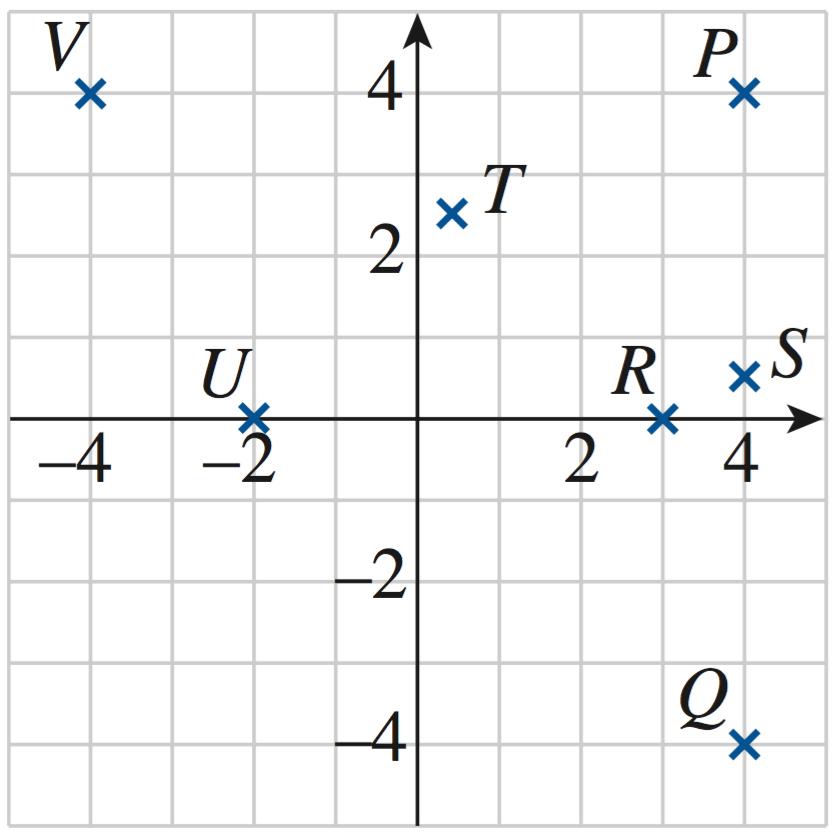
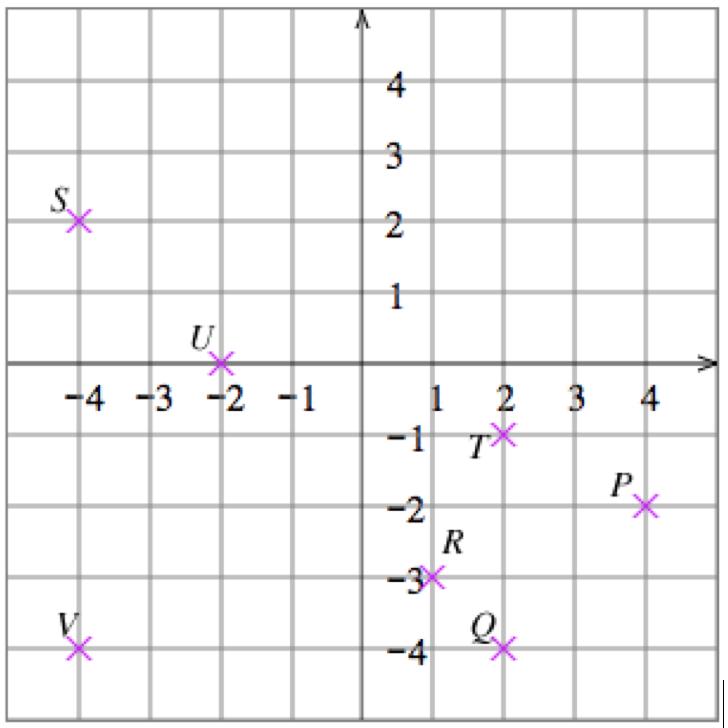
5. Solve the equation 𝑥 + 𝑦 = 1 for 𝑦 to get 𝑦 = 1 𝑥 Then plot some points:
Graph:
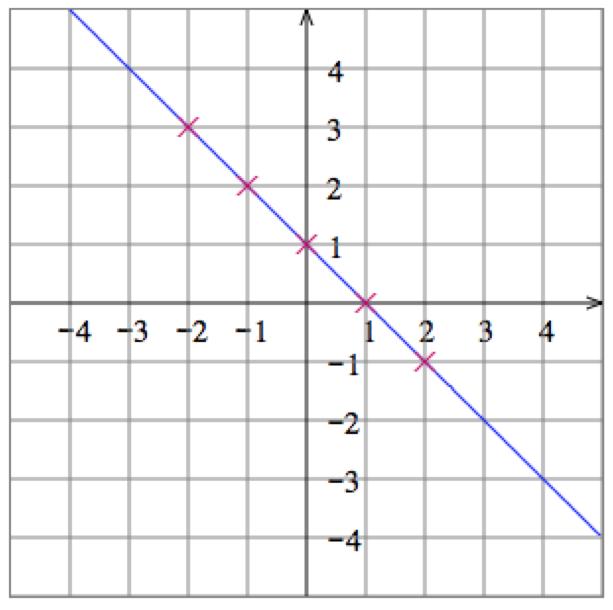
6. Solve the equation 𝑦 𝑥 = 1 for 𝑦 to get 𝑦 = 1 + 𝑥 Then plot some points:

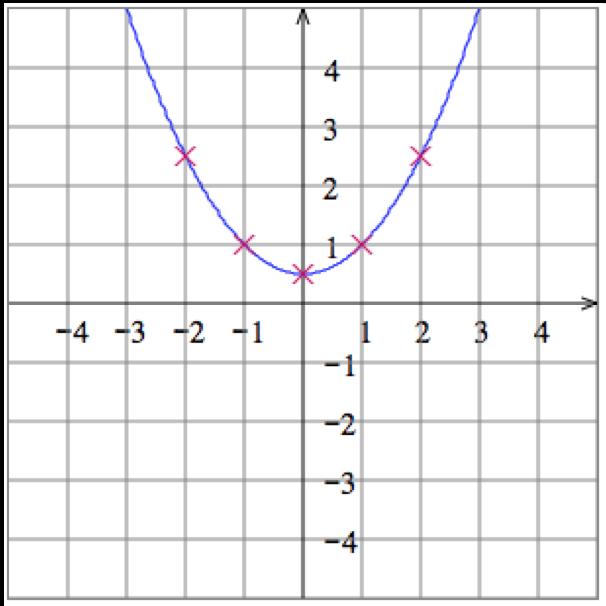

9.
Graph:

10.
